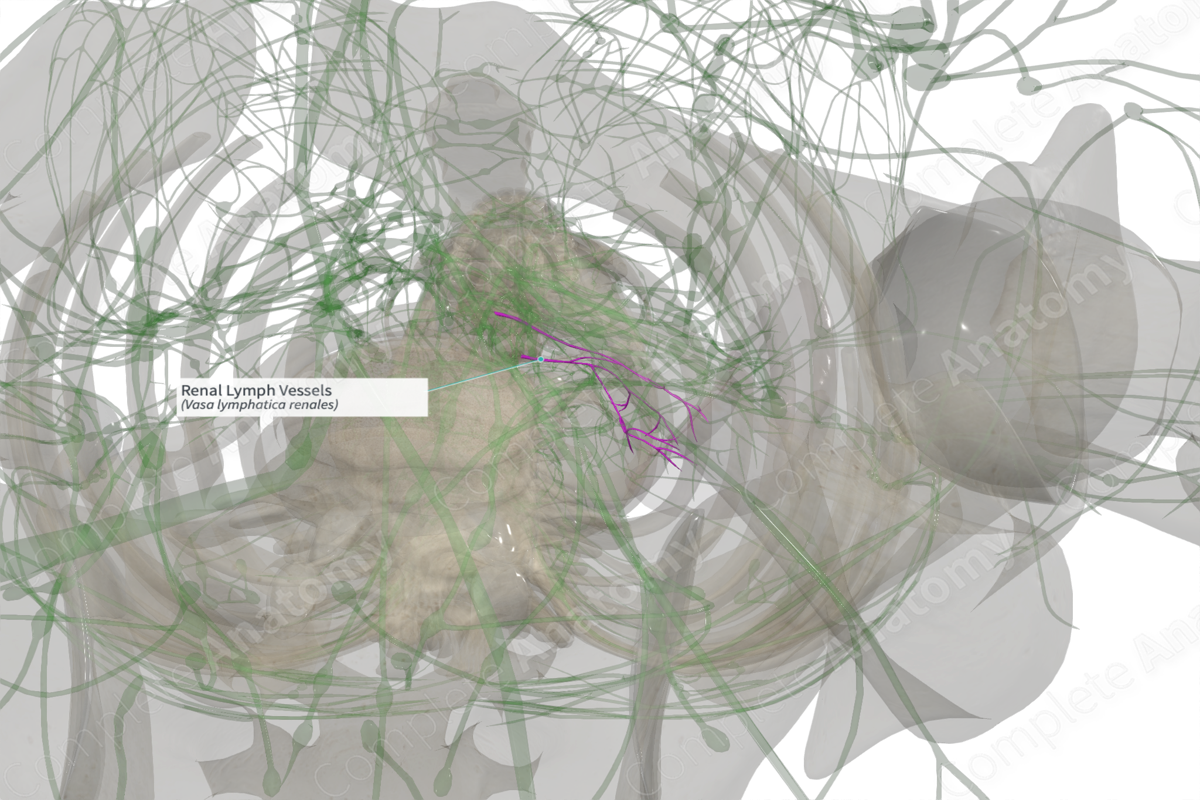
Quick Facts
Location: Accompanies the renal artery and its branches.
Drainage: Kidney and its fibrous capsule.
Direction of Flow: Right side: Right lumbar and intermediate lumbar nodes > cisterna chyli > thoracic duct.
Or
Left side: Left lumbar lymph nodes > cisterna chyli > thoracic duct.
Related parts of the anatomy
Description:
Description: (Location & Drainage)
Renal lymph vessels within the kidney parenchyma closely follow the interlobar and arcuate arteries. They join together at the renal hilum and accompany the renal vessels to their targets. On the right side, the renal lymph vessels terminate in the right and intermediate lumbar nodes, with only a small number of vessels crossing the midline to the preaortic nodes. The left renal lymph vessels connect to the left lumbar nodes (the lateral aortic and preaortic nodal groups) (Földi et al., 2012).
The medulla of the kidney does not contain any lymph vessels. Lymph fluid within the medulla is drained by blood capillaries (Földi et al., 2012).
References
Földi, M., Földi, E., Strößenreuther, R. and Kubik, S. (2012) Földi's Textbook of Lymphology: for Physicians and Lymphedema Therapists. Elsevier Health Sciences.
Description:
Description: (Location & Drainage)
Renal lymph vessels within the kidney parenchyma closely follow the interlobar and arcuate arteries. They join together at the renal hilum and accompany the renal vessels to their targets. On the right side, the renal lymph vessels terminate in the right and intermediate lumbar nodes, with only a small number of vessels crossing the midline to the preaortic nodes. The left renal lymph vessels connect to the left lumbar nodes (the lateral aortic and preaortic nodal groups) (Földi et al., 2012).
The medulla of the kidney does not contain any lymph vessels. Lymph fluid within the medulla is drained by blood capillaries (Földi et al., 2012).




